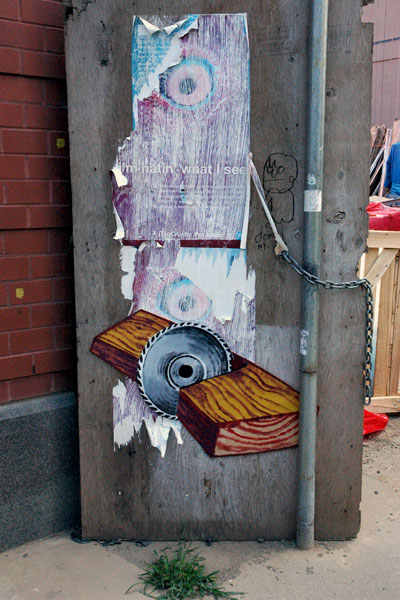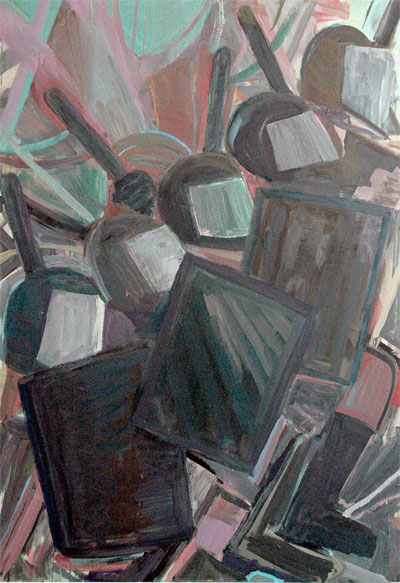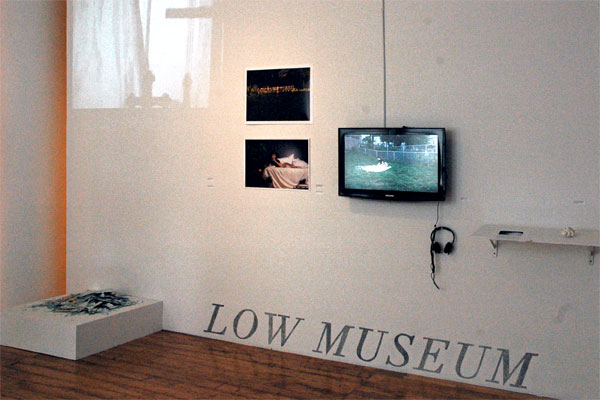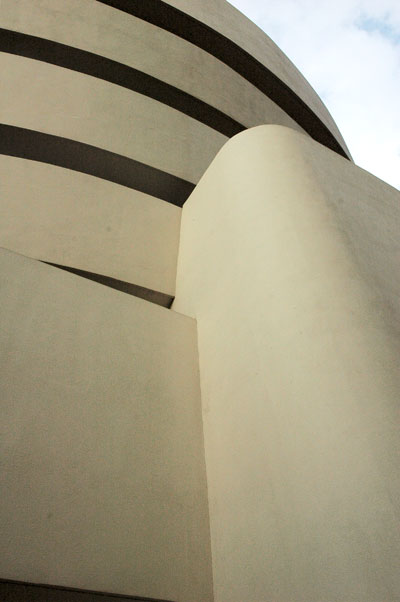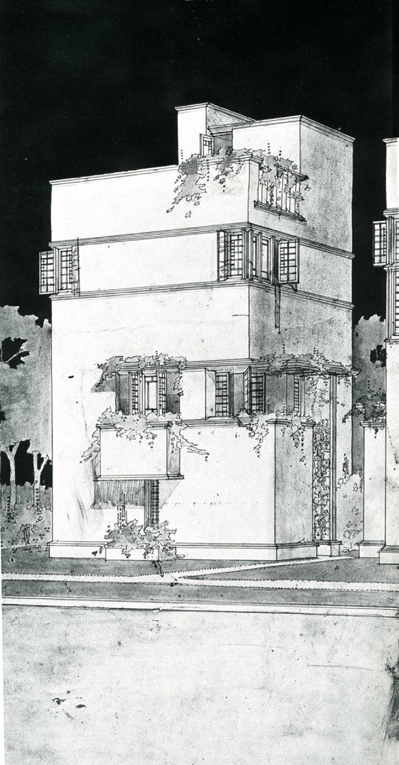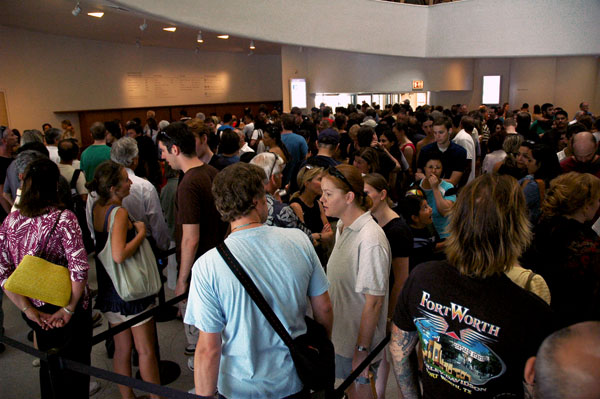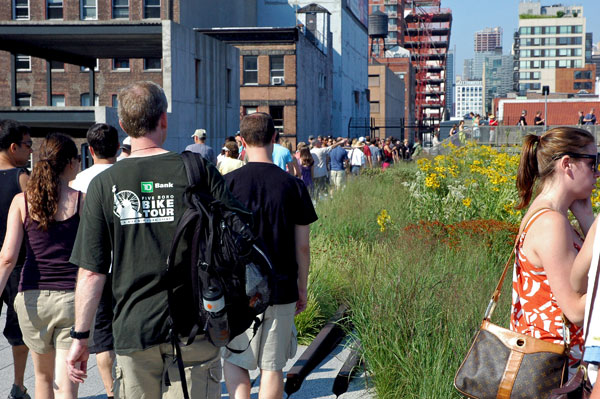
backstage at 6 pm: the battleships await their crews
Duke Riley's rich, seriously-ambitious, aggressively-unprecious but still whimsically-theatrical large-scale piece of interactive art, "Those About to Die Salute You", unfolded across the plains and the seas of Flushing Meadows on Thursday night, managing to exceed all expectations, probably including those of the artist himself.
The Queens Museum of Art commissioned the work from Riley earlier this year and this resourceful, heterodox (and genuinely-communal institution) got just about exactly what we saw described in the event's press release:
Those About to Die Salute You, a battle on water wielded with baguette swords and watermelon cannon balls by New York's art dignitaries, will take place on Thursday, August 13, 2009 at 6 pm in a flooded World's Fair-era reflecting pool in Flushing Meadows Corona Park, just outside of the Queens Museum of Art. Various types of vessels have been designed and constructed by artist provocateur Duke Riley and his collaborators: the galleons, some made of reeds harvested in the park, will be used to stage a citywide battle of the art museums in which representatives from the Queens Museum of Art, the Brooklyn Museum, Bronx Museum of the Arts, and El Museo del Barrio will battle before a toga-clad crowd of frenzied onlookers.
And the people came.
No words can do more than begin to describe what they saw - and what they contributed themselves. There are already enough images posted around the blogosphere to make anyone who wasn't there feel a bit like what now seems to have been the handful of people who didn't get to Woodstock forty years ago. I missed Bethel myself, but, especially since I had been following Riley's projects for several years, I wasn't about to miss Corona Park, only one transfer away on the subway. Besides, as a student of the classics, I just couldn't, and if I had given it a pass, when could I expect another invitation to a Naumachia?
Barry and I got there a bit before 6, as all the announcements had suggested, but after we had checked out the boat yards at one end of the flooded "lake", we learned that the sea battle itself wouldn't begin until after 8 o'clock.
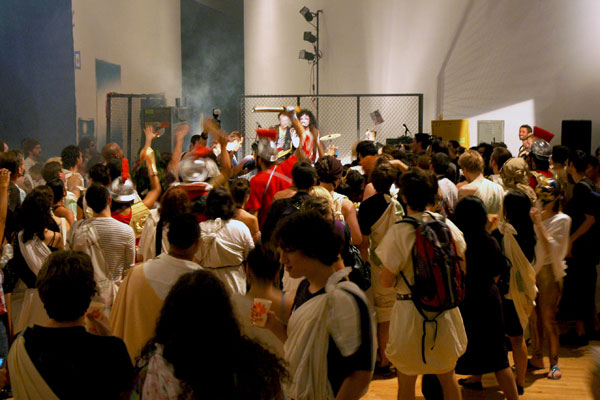
Populi entertained by Hell-Bent Hooker, including band-engineered special effects
We headed for the Museum, where an artist friend, one of Duke's "herohelpers", invited us to visit the now-nearly-empty and very dusty 40,000 sq. ft. "studio" where the battleships had been constructed. We stood next to an incongruously-shiny large black motorcycle with a box of cookies balanced on its seat: "Take some cookies; a nice Italian lady with her kids left these for us," offered a long-haired gentleman with a deep, froggy voice just before he headed off to the other end of the space. I later recognized him as the lead in the metal band which was the evening's early entertainment. We took two cookies, and they were the best: delicate, chewy macaroons.
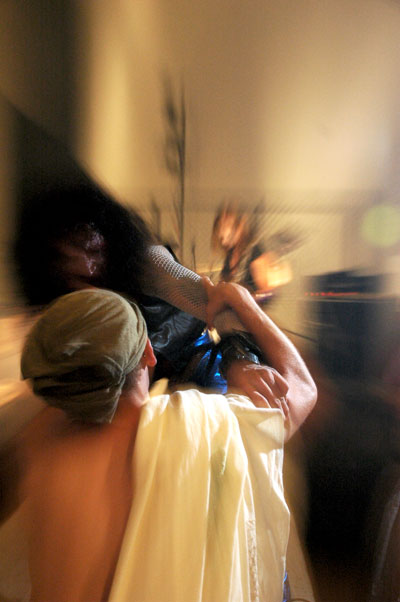
La-Vein Hooker (Hell-Bent Hooker vocals) and affectionate Roman fan
I guess we spent too much time mingling with all the Romans eating and imbibing in and around the Queens Museum and enjoying a bit of the evening serenades offered by Hell-Bent Hooker, so it was already twilight when we finally headed back to the site of the featured event (so featured that there was a box to one side, designated ESPN, where the faux anchorman for the proceedings was ensconced). There we found another huge crowd, and unfortunately all the spaces close to the water and the powerful spotlights had already been taken. In the end, while our late arrival meant I couldn't capture any decent documentary images, it also meant that I saved my camera from encounters with water balloons, ripe tomatoes and rotten melons.
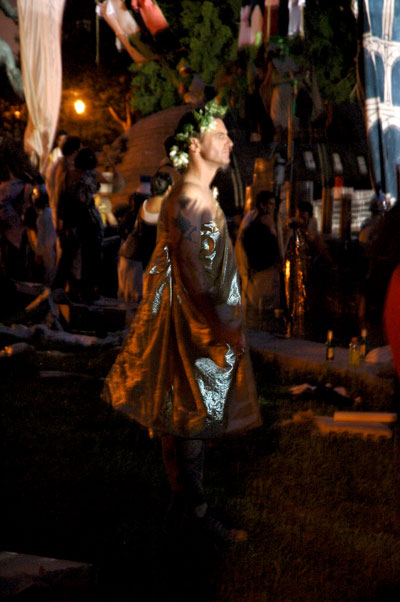
Duke-emperor, artist and prime mover, observing from the darkened wings
I've included a few of the pictures I took with available light while holding the camera high above my head. They're pretty "impressionistic", but the blurriness may convey a small bit of the excitement of the spectacle.
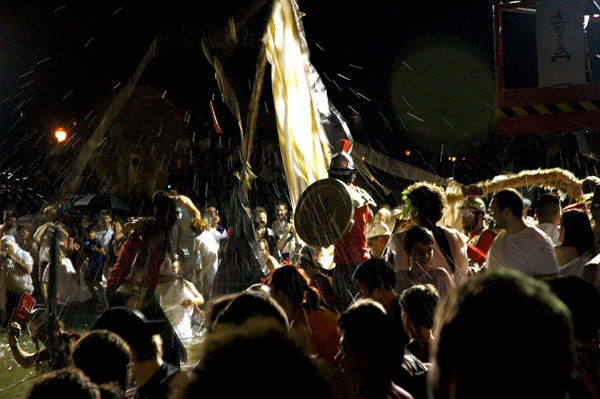
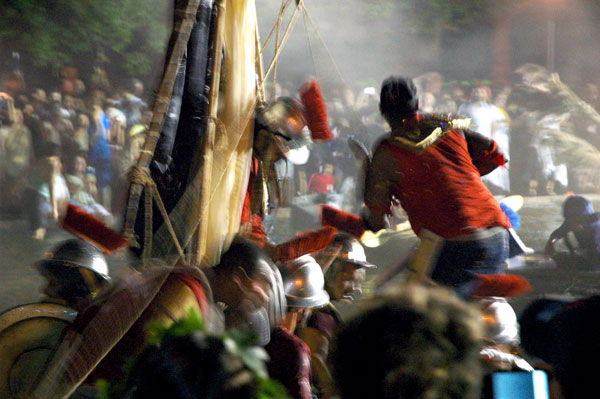
Queens Museum battleship and crew, later to be declared the victors
I'm not sure what's going on in the next image (the camera saw much more than I did, and it can't talk to me), but it looks a bit like a victory celebration.
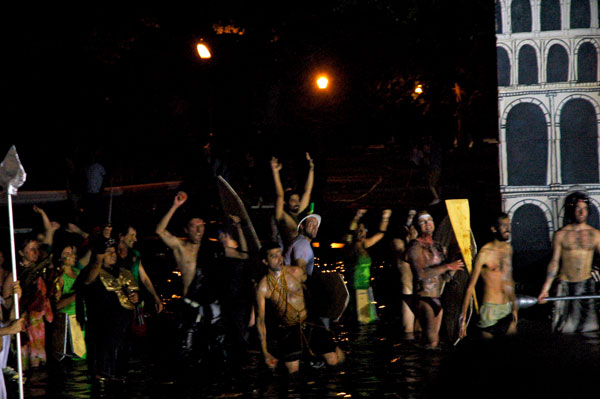
Neptune's rowdy crew?
That whoopee came just after the sinking or withdrawal of the last manned and womanned battleships, and just before a reed-and-paper-constructed Queen Mary 2 slowly glided toward the head of the lake. Riley and the Queen have a history: When the artist tried to maneuver his one-man submarine near that vessel while it was docked in Red Hook he was arrested and his own ship was temporarily seized. Two nights ago Riley oversaw the replica go up in flames amid spectacular fireworks - turn over, and sink.
The crowd, which for several minutes seemed to be somewhat in shock and awe as they saw and heard the Roman candles going off, then went wild.
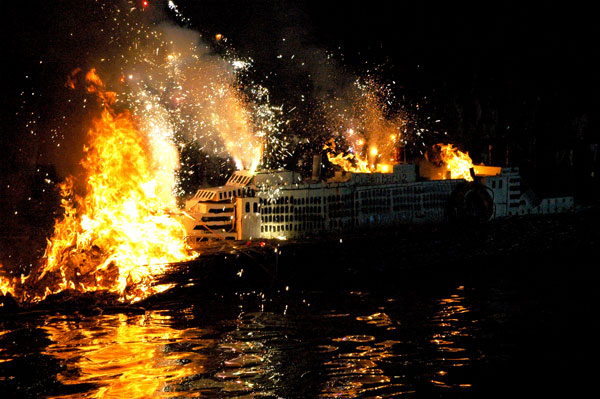
but no one's suggesting actual sorcery is involved
